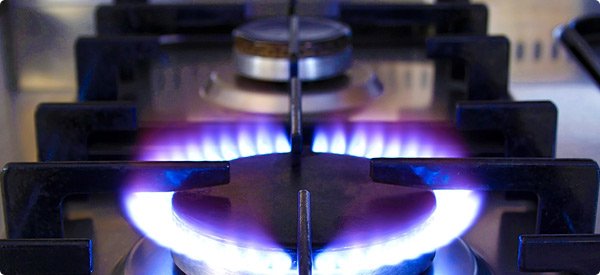Gas Stove Emissions Worsen Asthma Symptoms in Young Children
Gas Stove Emissions Worsen Asthma Symptoms in Young Children
October 13, 2008
Johns Hopkins scientists report that high levels of a noxious gas from stoves can be added to the list of indoor pollutants that aggravate asthma symptoms of inner city children, especially preschoolers.
Nitrogen dioxide (NO2), an irritating and toxic form of nitrogen oxide gas, is most prevalent in industrial zones but also found at higher levels in poor homes with unvented gas stoves.
In a report in the October issue of Environmental Health Perspectives, Hopkins researchers say asthma flare-ups were directly related to high concentrations of NO2 in the inner city homes they studied.
Specifically, the researchers compared the frequency and intensity of coughing, wheezing, shortness of breath and chest tightness to NO2 levels inside the inner-city homes of 150 Baltimore City 2- to 6-year-olds.
Eighty-three percent of the households had gas stoves, 72 percent were heated by natural gas, and 14 percent used gas stoves for heating in the winter. Forty-two percent of the households had annual incomes under $25,000.
Across the board they found that the pollutant worsened day and night symptoms. Each 20-point increase in nitrogen dioxide levels led to 10 percent more days of cough and 15 percent more days with limited speech due to wheezing.
Use of gas stoves, space heaters or home heating with a stove or an oven, either in combination or alone, each drove up nitrogen dioxide concentrations.
“Because using stoves as heat sources is a hallmark of urban poverty, our study tellingly points to how profound and direct the effects of purely social and environmental factors can be on a child’s health,” says Johns Hopkins lung expert Nadia Hansel, M.D., a lead researcher on the report.
“Doctors caring for children with asthma should always inquire about the home’s heating and cooking appliances and urge those using gas-based stoves and space heaters to switch to electric heating and cooking, if possible, or at least properly vent the exhaust gases.
“Inner-city preschoolers appear especially vulnerable because they spend most of their time indoors and in homes with high levels of nitrogen dioxide,” says study senior investigator and Hopkins pulmonary expert Gregory Diette, M.D.
“We knew that but still we were disturbed by what we saw: As nitrogen dioxide levels crept up, so did the frequency and severity of these kids’ symptoms.”
Asthma is the most common pediatric chronic illness, affecting 6.2 million children in the United States. Severe illness is most prevalent in inner-city children, doctors say, because of poor access to regular health care and disproportionate exposure to indoor allergens such as mouse and cockroach dander, dust, cigarette smoke and automobile fumes.
In an earlier study of inner-city children with asthma, Johns Hopkins Children’s Center researchers found even mild asthma among this vulnerable group appears to be more unpredictable than ever, with recommendations for at least four check-ups a year in such children to ward off dangerous flare-ups.
Current asthma guidelines call for follow-up of one to six months after diagnosis.
Co-investigators in the study: Patrick Breysse, Elizabeth Matsui, M.D. M.H.S.;
Meredith McCormack, Jean Courtin-Brosnan, D’Ann Williams, Jennifer Moore and Jennifer Cuhran, all of Hopkins.
The research was funded by the National Institute of Environmental Health Sciences, the National Heart, Lung and Blood Institute and the U.S. Environmental Protection Agency.


Comments are closed.